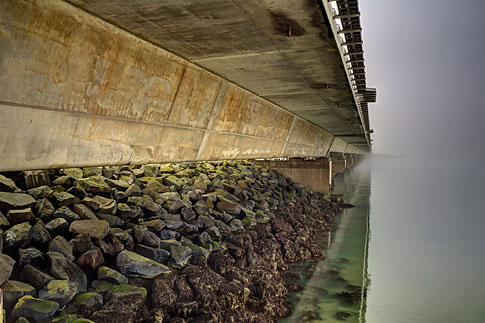
The Delta Works, a 640-km system of sea barriers, is the world's largest coastal defense
(2 of 2)
That sets the stage not just for a human disaster but also potentially for an economic one that could be felt well beyond the site of the catastrophe. Severe floods struck the Thai capital of Bangkok in 2011, inundating the factories that churn out as much as a quarter of the world's disk drives. The floods cost Thailand nearly $50 billion, but the disaster also disrupted global supply chains, leading to a worldwide shortage. "As global corporations expand into emerging growth markets, their operations and supply chains will become exposed to a complex set of climate risks," said Helen Hodge, head of maps and indices at the risk-research firm Maplecroft, which recently published an urban climate vulnerability index. The lesson for cities and corporations is clear: prepare for climate change or risk turning a natural disaster into man-made catastrophe.
Dutch cities like Amsterdam and Rotterdam aren't the only examples of urban areas that have taken real — if expensive — steps to shore up against the effects of global warming. Like many old cities, London was built on a floodplain and was victimized by storm surges repeatedly throughout its history — including the 1953 Watersnoodramp. That flood persuaded British officials to begin building the great Thames Barrier, the second largest movable seawall in the world after the Delta Works. Finally completed in 1984 at the cost of more than $2 billion in today's figures, the Thames Barrier is usually open to allow maritime traffic down one of the world's busiest rivers. But the gates swing shut to protect London from a rising storm surge — a maneuver that has been required more than 100 times since the barrier was completed. The half-drowned Italian city of Venice — which has to contend with rising sea levels even as it sinks at the rate of nearly 4 cm a century — is building the multibillion-dollar MOSE project, a network of seawalls meant to close off the city from surging tides.
In the weeks since Sandy, New York officials have been debating the wisdom of installing similar seawalls to protect Manhattan. (While New York City has more than 800 km of coastline, it has few physical defenses against flooding.) But most of the plans being considered would cost more than $10 billion, take years to complete and leave people and property beyond the seawalls at even greater risk of flooding. As the failure of the levees in New Orleans after Hurricane Katrina showed, physical barriers don't guarantee safety — especially as climate change raises sea levels beyond what cities had prepared for. (The Thames Barrier will likely be outpaced by rising seas as soon as 2050.) "I don't think there's a practical way to build barriers in the ocean," New York Mayor Michael Bloomberg said after Sandy hit. "If you spent a fortune, it's not clear to me that you would get much value for it."
Even the Netherlands is moving away from a coastal-defense system based only on expensive seawalls. The Dutch are investing in a plan called Room for Rivers, which uses sandbars to give waterways the space to overflow safely during floods. For the developing-world cities that are more vulnerable to climate change, such as Kolkata or Ho Chi Minh City, multibillion-dollar seawalls will likely never be a viable option. But there are alternatives. The Bangladeshi capital of Dhaka — a constant victim of floods and cyclones — has been building embankments, concrete-reinforced walls and pumping stations in the most densely populated parts of the city. Emergency shelters are built on stilts so that residents have a safe place to gather in the event of a storm. Bangladeshis have even adapted to the frequent floods by creating biaras — floating fruit-and-vegetable gardens that rise and fall with the water level. Still, no one thinks those small adaptations alone will save Dhaka, which Maplecroft rated this month as the global city most vulnerable to climate change.
It doesn't help that Dhaka's development has stripped away the wetlands and mangrove forests that can provide a natural barrier to storm surges, even as more and more people have piled into coastal danger zones. It's a mistake that has been repeated in rich and poor cities around the world. In the U.S., nearly 4 million people live within a meter of high tide, putting them at risk every time a storm whips by. Globally, more than 600 million people live in cities and towns less than 10 m above sea level. When storms and floods do strike — and they'll likely become worse with warming — they affect more people and more property. Cities like Amsterdam, London and Venice have proved that it is possible to fight rising seas and coastal floods — albeit at a stiff price. But unless we deal directly with climate change, the sea will one day win out.